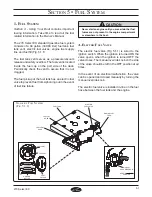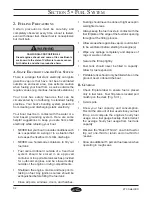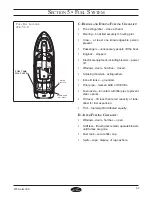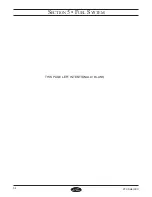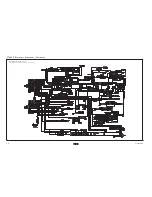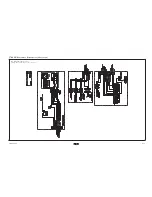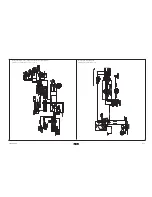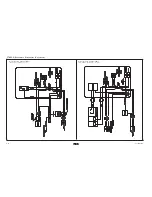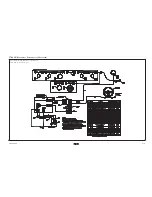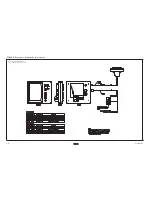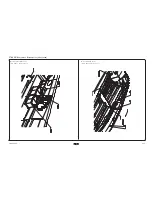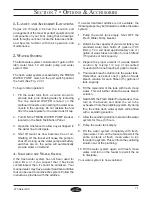
6.11
S
ECTION
6 • E
LECTRICAL
S
YSTEM
270 Select EX
12. E
LECTROLYTIC
C
ORROSION
AND
Z
INC
A
NODES
Electrolytic corrosion of metals on power boats can
result in rapid and serious deterioration of metal
parts. You must set a regular schedule and look for
the possibility of electrolytic corrosion (the
deterioration of metals due to dissimilar
characteristics when placed in salt water). It is your
responsibility to check for and replace parts
damaged due to electrolytic corrosion.
To minimize electrolytic corrosion of the metals on
your boat, zinc anode plates are provided on your
boat to protect underwater hardware. Zinc, being
much less "noble" than the copper-based alloys and
aluminum used in underwater fittings, will deteriorate
first and protect the other metals.
Stern drives are fitted with zinc anodes on their lower
units (refer to your Engine Owner's Manual for their
locations). If your boat is equipped with trim tabs,
zinc plates are installed on each of the trim tabs.
Zinc anodes require replacement about every six
months, if the boat is operated in salt water. In fresh
water, the zinc anodes can be replaced about once
a year.
If the anodes deteriorate more rapidly than this, there
is probably a stray current problem within the boat
or at the slip or mooring.
If the anodes do not deteriorate, they are not
protecting the other metallic parts of your boat. This
can be caused by loose anodes or by low grade
zinc or by not having a solid electrical contact
between the anode and the metal it contacts, or by
paint on the anodes.
If the anodes are deteriorating rapidly, or not at all,
contact your dealer.
When an AC shore power system is connected to
the boat, the underwater metal fittings will, in effect,
be connected through the water to grounded metals
ashore. This results in the zincs being consumed
at a faster rate unless the marina maintains a
protective system to prevent this. When the marina
Never disconnect the green wire (safety ground) from
the engine terminal.
!
CAUTION
NOTICE
DO NOT PAINT BETWEEN THE ZINC AND THE
METAL IT CONTACTS, AND DO NOT PAINT OVER
THE ZINC.
provides a zinc anode in the water bonded to the
metal outlet box on the dock, zinc loss on the boat
will be reduced. Do not connect this zinc to the
boat's ground system.
It is extremely important that all electrically-operated
DC equipment and accessories be wired so that
the ground polarity of each device is the same as
that of the battery. Your boat has a negative ground
system. The zinc anode is connected to every metal
item in the boat (fuel tanks, underwater gear, etc.)
via the green bonding wire.
Galvanic Isolator:
Electrolytic corrosion can also
be caused by "stray currents" due to a fault in an
electrical item, even though correctly grounded. A
galvanic current isolator (zinc saver) is standard
on all Sea Ray
®
boats. It is installed between the
shore power ground and the boats' AC grounding
connection to the DC bonding system. This
connection maintains the safety ground from
dockside power while stopping the flow of DC
corrosive currents. The galvanic isolator is located
behind the Main Distribution Panel.
Содержание 270 Select EX
Страница 1: ...Owner s Manual Part Number MRP 1803645 Sea Ray Owner s Manual 270 Select EX...
Страница 2: ......
Страница 4: ...270 Select EX ii THIS PAGE LEFT INTENTIONALLY BLANK...
Страница 46: ...2 16 SECTION 2 GENERAL BOAT ARRANGEMENT 270 Select EX THIS PAGE LEFT INTENTIONALLY BLANK...
Страница 66: ...5 4 SECTION 5 FUEL SYSTEM 270 Select EX THIS PAGE LEFT INTENTIONALLY BLANK...
Страница 86: ...6 20 270 Select EX NAVMAN SYSTEM DIAGRAM FIG 6 20 1 DRAWING NO 09 720 270 SLX ELECTRICAL SCHEMATICS CONTINUED...
Страница 102: ...7 12 SECTION 7 OPTIONS ACCESSORIES 270 Select EX THIS PAGE LEFT INTENTIONALLY BLANK...
Страница 106: ...270 Select EX Index 4 INDEX THIS PAGE LEFT INTENTIONALLY BLANK...

